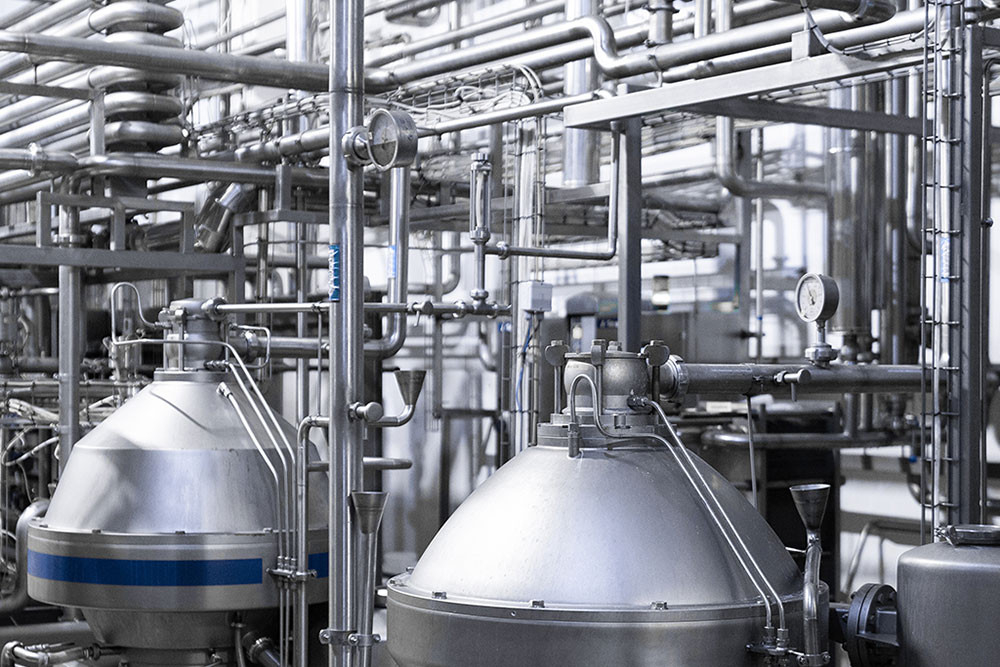What Is Trace Heating?
 CONTENTS
CONTENTS
- How does trace heating work?
- The components of a trace heating system
- The benefits of trace heating
- Different applications of trace heating
- Contact us today
Electric heat tracing, often referred to as trace heating or surface warming, uses electrical cables to keep pipes and vessels warm or increase their temperature. The system protects them against freezing and bursting.
Here at ICE Thermal, we offer our trace heat installation services nationwide. Our customisable trace heat systems can protect your pipe's integrity and help it maintain optimal temperatures. Our engineers are available 365 days a year, including out of hours.
Read on to learn more about trace heating and what it can do for you.
How does trace heating work?
Heat tracing, or the method of keeping pipes and vessels warm through surface heating, operates by either preserving their current warmth or elevating it to a desired level.
Imagine a long electric blanket wrapped around a pipe: when electricity flows through this blanket, it encounters resistance. The transformation of electrical power into thermal energy is achieved through this resistance. You can learn more about what resistance is here.
By maintaining the warmth in pipes, this mechanism keeps them from freezing and ensures they are the right temperature for material handling. It's all about maintaining balance – too much heat could damage contents while too little might not protect against cold weather effectively.
The components of a trace heating system
A typical trace heating system includes several key components: the heating cable (the heart of the operation), thermostats for temperature control, connection kits to power up the system, and insulation to keep the warmth from escaping.
The cables can be self-regulating or constant wattage. Self-regulating cables adjust their output based on surrounding temperatures, whereas constant wattage cables give off a steady amount of heat regardless of external conditions. The latter are usually simpler and often cheaper.
Fitting trace heating requires careful planning and execution. The pipes need to be wrapped well but not too tightly. The aim is even coverage without overlaps which could lead to hotspots or insufficient areas lacking proper warmth. You will also need to consider waterproof solutions if the insulation is used on pipes outdoors.
The benefits of trace heating
One of the key benefits of trace heating is its ability to prevent water in pipes from freezing during cold spells. In industries where a nonstop flow is vital, this is exceptionally important.
This system is not just about avoiding inconveniences; when water freezes, it expands, which can lead to burst pipes and significant repair costs. Trace heating serves as a safeguard, ensuring temperatures stay warm enough to prevent freezing.
In various manufacturing processes, certain materials need to be kept at specific temperatures for quality control purposes, too. Trace heating enables this precise temperature maintenance without needing bulky insulation or constant monitoring.
By optimising temperature control, this technique not only upholds the integrity of products but also curtails energy usage, offering a more streamlined alternative to conventional approaches such as steam tracing or employing room heaters.
Unlike centralised heat sources that may waste energy through dissipation before reaching their target area, trace heating applies warmth directly where it's needed most so it's far more energy efficient, as well. You can learn more about how thermal insulation reduces energy bills in this blog.
Different applications of trace heating
Trace heating is a very versatile solution that can be used in lots of different settings for a range of purposes.
Frost protection for pipes
During the colder months, water conduits risk freezing and rupturing, which could lead to expensive repairs. Trace heating maintains a consistent temperature so it prevents water inside pipes from freezing. This application is particularly crucial for buildings in cold climates and for industrial processes requiring constant fluid flow at specific temperatures.
Roof and gutter de-icing
Snow build up on roofs can cause structural damage or even collapse due to weight accumulation. Additionally, ice dams forming in gutters prevent proper drainage, causing water to back up into buildings. Trace heating offers a proactive solution by melting snow and ice before they become problems.
This method not only extends the life span of roofing materials but also safeguards against potential leaks that could lead to expensive repairs.
Maintaining process temperatures
In many industrial operations such as food processing or chemical manufacturing, maintaining precise temperatures is non-negotiable for quality control purposes. Trace heating ensures substances remain at their required temperature throughout processing pipelines or storage vessels, preserving product integrity during production cycles.
Contact us today
No matter where you are in the UK, our trace heat installation services can quickly make your property safe, warm, and more energy efficient. Our thermal insulation operatives have over 10 years experience of installing insulation in domestic and commercial properties, and can carry out an effective, bespoke project tailored to even the most unique requirements.
Get in touch with our friendly team on 020 3376 4802 or [email protected] to find out more about how we can help you.

Speak with me today,
I’m here to help
By asking you a few questions either via phone or email I can immediately provide a realistic estimation of the cost.

Why choose us?
- Cater to a wide variety of cleaning situations
- Nationwide coverage, available 24/7
- Cater to commercial and domestic clients
- Free survey provided prior to quotation
- Emergency response team
- Offer a bespoke service designed to suit all your needs
- All technicians hold professional health and safety qualifications, including BICSc, IOSH, Dewpoint Professional & Safe Contractor
We’re fully accredited
We place best practise, professional expertise and health and safety at the core of our business. We’re fully compliant with all legal obligations. You can view a list of our accreditations below, or visit our Health & Safety page for more information.











-RGB-small.1707319151.jpg)




















